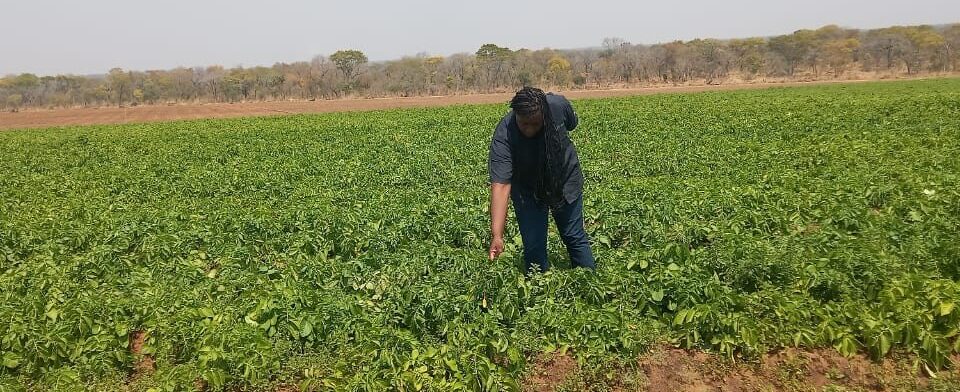Efficient Irrigation is a Climate -smart Options
Birkenholtz, T. (2017). Assessing India’s drip-irrigation boom: efficiency, climate change and groundwater policy. Water International, 42(6), 663-677.
Hou, H., Han, Z., Yang, Y., Abudu, S., Cai, H., & Li, Z. (2020). Soil CO2 emissions from summer maize fields under deficit irrigation. Environmental Science and Pollution Research, 27(4), 4442-4449. https://doi.org/10.1007/s11356-019-07127-1
Mushtaq, S., Maraseni, T., & Reardon-Smith, K. (2013). Climate change and water security: estimating the greenhouse gas costs of achieving water security through investments in modern irrigation technology. Agricultural Systems, 117, 78-89.
Nikolaou, G., Neocleous, D., Christou, A., Kitta, E., & Katsoulas, N. (2020). Implementing sustainable irrigation in water-scarce regions under the impact of climate change. Agronomy, 10(8), 1120.
R Lamm, F., M. O’Brien, D., & H. Rogers, D. (2015). Economic Comparison of Subsurface Drip and Center Pivot Sprinkler Irrigation Using Spreadsheet Software. Applied Engineering in Agriculture, 31(6), 929-936. https://doi.org/https://doi.org/10.13031/aea.31.11253
Zhang, X., Xiao, G., Li, H., Wang, L., Wu, S., Wu, W., & Meng, F. (2020). Mitigation of greenhouse gas emissions through optimized irrigation and nitrogen fertilization in intensively managed wheat–maize production. Scientific Reports, 10(1), 5907. https://doi.org/10.1038/s41598-020-62434-9
International Year of Millets
https://www.fao.org/millets-2023/en
https://www.fao.org/millets-2023/about/en
Reducing Emissions in Rice Production
Epule, E. T., Peng, C., & Mafany, N. M. (2011). Methane emissions from paddy rice fields: strategies towards achieving a win-win sustainability scenario between rice production and methane emission reduction. Journal of Sustainable Development, 4(6), 188.
Jat, M. L., Dagar, J. C., Sapkota, T. B., Govaerts, B., Ridaura, S., Saharawat, Y. S., Sharma, R. K., Tetarwal, J., Jat, R. K., & Hobbs, H. (2016). Climate change and agriculture: adaptation strategies and mitigation opportunities for food security in South Asia and Latin America. Advances in agronomy, 137, 127-235.
Northrup, D. L., Basso, B., Wang, M. Q., Morgan, C. L., & Benfey, P. N. (2021). Novel technologies for emission reduction complement conservation agriculture to achieve negative emissions from row-crop production. Proceedings of the National Academy of Sciences, 118(28), e2022666118.
Sander, B. O. (2022). How rice can contribute to solving the climate crisis.
Zheng, H., Huang, H., Yao, L., Liu, J., He, H., & Tang, J. (2014). Impacts of rice varieties and management on yield-scaled greenhouse gas emissions from rice fields in China: A meta-analysis. Biogeosciences,11(13), 3685-3693.
Harnessing Cashew Plantations for a Greener Tomorrow, A win – win for Emission Reduction and Carbon Markets
Ashiagbor, G., Asare-Ansah, A. O., Laari, P. B., and Asante, W. A. (2022). Cashew expansion holds potential for carbon stocks enhancement in the forest-savannah transitional zone of Ghana. Land Use Policy121, 106318.
Reddy, N., Shivananda, T., Reddy, G., Palanichamy, V., Venkateswarlu, B., and Debnath, A. (2011). Cashew nut production in Indian subcontinent with emphasis on carbon sequestration potential in a changing global climate scenario. In “I International Symposium on Cashew Nut 1080”, pp. 33-45.
Victor, A. D., Valery, N. N., Boris, N., Aimé, V. B. T., and Louis, Z. (2021). Carbon storage in cashew plantations in Central Africa: case of Cameroon. Carbon Management 12, 25-35.
https://www.cidp.org.zm/index.php/project/project-cost-components
Research Outline
Adusei, G., Aidoo, M. K., Srivastava, A. K., Asibuo, J. Y., and Gaiser, T. (2023). Model-based climate change adaptational potential and productivity of some cowpea genotypes and its sensitivity to bias adjustment. Frontiers in Agronomy 5, 1144219.
Hoogenboom, G., C.H. Porter, K.J. Boote, V. Shelia, P.W. Wilkens, U. Singh, J.W. White, S. Asseng, J.I. Lizaso, L.P. Moreno, W. Pavan, R. Ogoshi, L.A. Hunt, G.Y. Tsuji, and J.W. Jones. (2019). The DSSAT crop modeling ecosystem. In: p.173-216 [K.J. Boote, editor] Advances in Crop Modeling for a Sustainable Agriculture. Burleigh Dodds Science Publishing, Cambridge, United Kingdom (http://dx.doi.org/10.19103/AS.2019.0061.10).
Ramírez-Villegas, J., Lau, C., Köhler, A., Signer, J., Jarvis, A., Arnell, N., Osborne, T., and Hooker, J. Climate Analogues: Finding Tomorrow’s Agriculture Today: Working Paper No. 12, Cali, Colombia, 2011.
